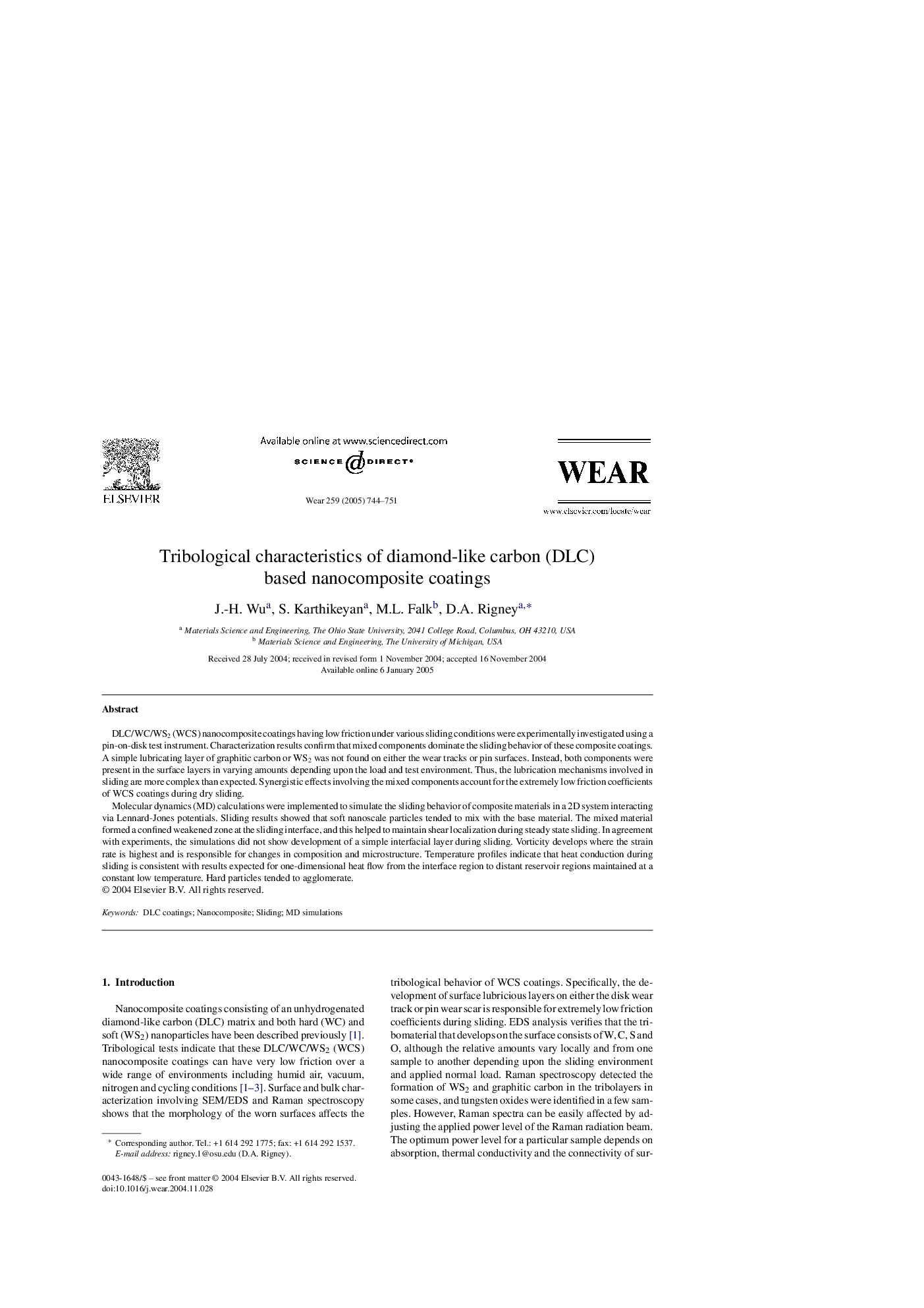| Article ID | Journal | Published Year | Pages | File Type |
|---|---|---|---|---|
| 9679478 | Wear | 2005 | 8 Pages |
Abstract
Molecular dynamics (MD) calculations were implemented to simulate the sliding behavior of composite materials in a 2D system interacting via Lennard-Jones potentials. Sliding results showed that soft nanoscale particles tended to mix with the base material. The mixed material formed a confined weakened zone at the sliding interface, and this helped to maintain shear localization during steady state sliding. In agreement with experiments, the simulations did not show development of a simple interfacial layer during sliding. Vorticity develops where the strain rate is highest and is responsible for changes in composition and microstructure. Temperature profiles indicate that heat conduction during sliding is consistent with results expected for one-dimensional heat flow from the interface region to distant reservoir regions maintained at a constant low temperature. Hard particles tended to agglomerate.
Related Topics
Physical Sciences and Engineering
Chemical Engineering
Colloid and Surface Chemistry
Authors
J.-H. Wu, S. Karthikeyan, M.L. Falk, D.A. Rigney,
